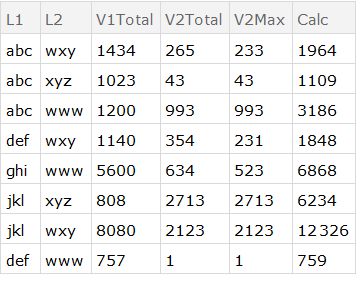I use a function to do something similar to a SQL sum. I've asked about simplifying it in another post. I'm still using this function and it works well for aggregates like Total or Mean. It doesn't work for Count though. The function is:
mySum[x_, keys1_, keys2_, values_] := Module[{a1, a2, a3, a4, a5},
a1 = Dataset[x];
a2 = a1[GroupBy[keys1], Total, values];
a3 = Normal[Values[a2]];
a4 = Normal[Keys[a2]];
a5 = AssociationThread[keys2 -> #] & /@ a4;
MapThread[Join, {a5, a3}]
];
I tried Count directly in a Dataset, where it also failed. I really don't know what to try next. The Dataset example in Help gets into other sorts of details and I couldn't see anything applicable to this situation.
The only other thing I could think of, which I haven't tried, is using Total and Mean, joining the results and calculating the count. That seems pretty awkward.
Does anyone have any suggestions?





a2from your other question, does the following modification of WReach's answer give what you need:a2[GroupBy[KeyTake[{"L1", "L2"}] -> KeyTake[{"V1", "V2"}]] /* KeyValueMap[Join], Merge[Total@*Counts]]? $\endgroup$Length, orTotal@*UnitizeorTotal@*Countsinstead ofCount? $\endgroup$